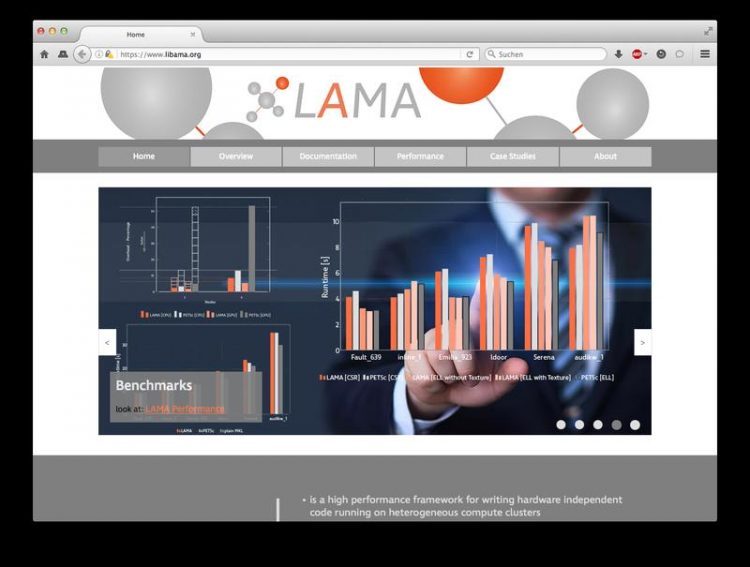LAMA 2.0 accelerates more than just numerical applications

www.libama.org Fraunhofer SCAI
By offering DSL-like C++-Syntax LAMA encourages writing of hardware-independent code. The framework allows the management of data on heterogeneous and distributed system architectures. These can range from embedded “System on a Chip” (aka SoC) devices to highly-parallel Supercomputers.
Consequently, LAMA offers full cluster support. Kernel management is provided with ready-to-use modules encapsulating interfaces to Intel® MKL and Nvidia® cuBLAS/cuSPARSE (targeting all multicore CPUs, Nvidia® GPUs, and Intel® Xeon® Phi™). For the purpose of extending LAMA, the framework supports the integration of custom modules.
Hence, it greatly facilitates the development of fast and scalable software for nearly every system on every scale. LAMA accelerates the time-to-market for new product developments significantly, reduces the time spent in maintaining existing code, and offers up-to-date hardware compatibility for even the latest architectures.
Typically, LAMA targets applications with needs in numerical mathematics (such as CFD and FEM simulation). Furthermore, LAMA 2.0 integrates methodology in the areas of optimization (e.g. for seismic imaging), computer vision, and deep learning.
It is available with an industry-friendly dual licensing model (AGPL for open source or individual agreements for other interests).
Media Contact
All latest news from the category: Information Technology
Here you can find a summary of innovations in the fields of information and data processing and up-to-date developments on IT equipment and hardware.
This area covers topics such as IT services, IT architectures, IT management and telecommunications.
Newest articles

A universal framework for spatial biology
SpatialData is a freely accessible tool to unify and integrate data from different omics technologies accounting for spatial information, which can provide holistic insights into health and disease. Biological processes…

How complex biological processes arise
A $20 million grant from the U.S. National Science Foundation (NSF) will support the establishment and operation of the National Synthesis Center for Emergence in the Molecular and Cellular Sciences (NCEMS) at…

Airborne single-photon lidar system achieves high-resolution 3D imaging
Compact, low-power system opens doors for photon-efficient drone and satellite-based environmental monitoring and mapping. Researchers have developed a compact and lightweight single-photon airborne lidar system that can acquire high-resolution 3D…





















